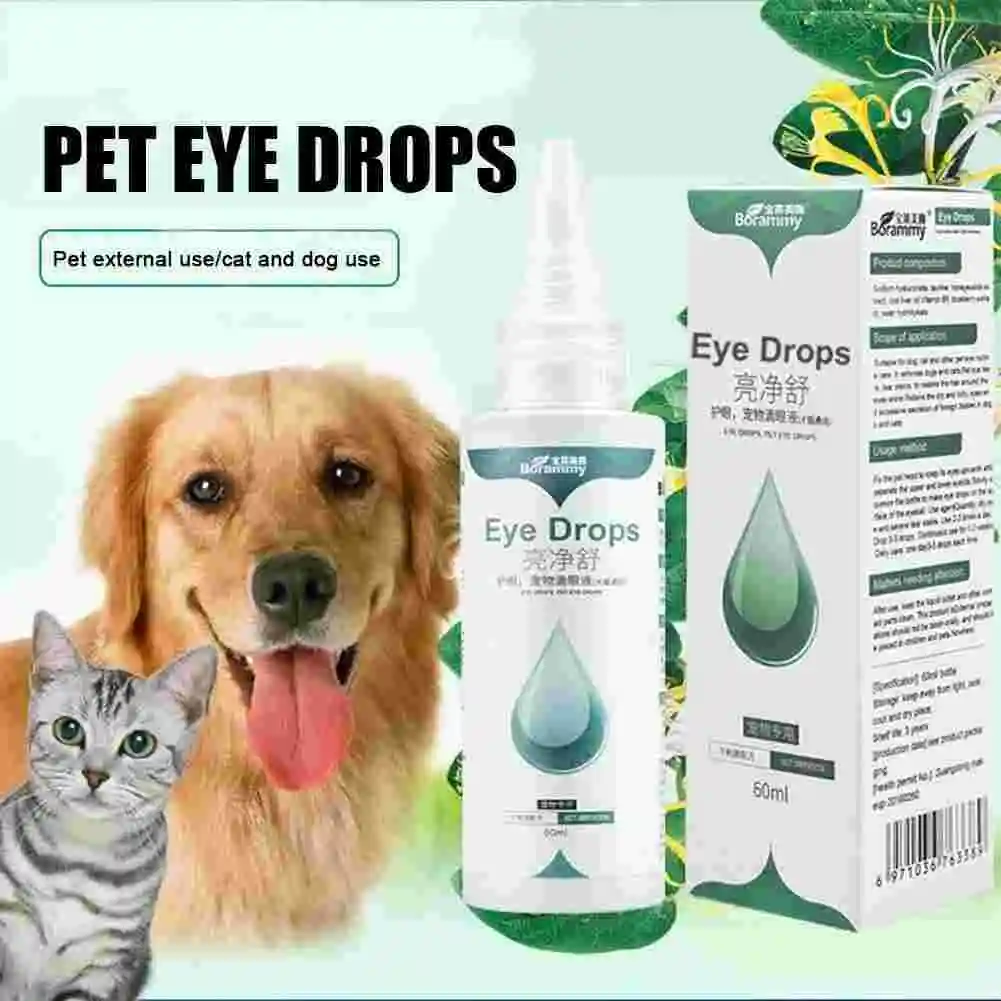Cats, with their charming eyes, often leave us in wonder. Those expressive spheres are not only windows to their souls but also vital indicators of their overall health. However, like any other part of the body, a cat eye conditions can face a range of issues, from minor irritations to more complex conditions.
In this article, we embark on a journey to explore the world of treating and managing cat eye conditions. We’ll delve into the importance of seeking professional veterinary care when needed. The prescription medications veterinarians may prescribe to address eye issues. How herbal remedies can offer a natural touch to cat eye care.
Let’s separate the secrets to maintaining the bright and healthy eyes that your feline friend deserves.
Veterinary Intervention: When Professional Help is Needed for Cat Eye Conditions
Prescription Medications: The Doctor’s Orders
When it comes to your cat’s eye health, there are times when professional veterinary intervention is essential. Eye problems can range from minor irritations to severe conditions that require immediate attention. In this section, we’ll discuss the importance of seeking veterinary help when needed and the prescription medications that veterinarians may prescribe to address eye issues, including antibiotics and anti-inflammatory medications.
The Importance of Veterinary Intervention
- Proper Diagnosis: Veterinary professionals are trained to diagnose the root cause of eye problems accurately. This ensures that the right treatment is administered.
- Treatment Tailored to the Condition: Veterinarians can provide targeted treatments tailored to your cat’s specific eye condition, whether it’s an infection, injury, or chronic issue.
- Prevention of Complications: Timely veterinary intervention can prevent minor eye problems from becoming more severe or causing long-term complications.
- Prescription Medications: Veterinarians have access to prescription medications that are not available over the counter, which are often necessary for treating eye infections and inflammations.
Prescription Medications: The Doctor’s Orders
When your cat experiences eye issues, a veterinarian may prescribe various medications to address the underlying problem. Two common types of prescription medications for eye conditions are antibiotics and anti-inflammatory drugs.
Antibiotics
Antibiotics are prescribed for cat bacterial eye infections, which can cause symptoms like redness, discharge, and discomfort. Here’s how they work:
- Kill Bacteria: Antibiotics target and kill the bacteria responsible for the infection.
- Types: They can be prescribed in the form of eye drops, ointments, or oral medications, depending on the severity and type of infection.
- Treatment Duration: It’s crucial to complete the full course of antibiotics, even if the symptoms improve, to ensure all bacteria are eradicated.
Cat Eye Conditions: Anti-inflammatory Medications
Anti-inflammatory medications, such as non-steroidal anti-inflammatory drugs (NSAIDs), steroids, or cyclosporine, are prescribed for a range of eye conditions, including conjunctivitis, uveitis, or corneal injuries. Here’s how they work:
- Reduce Inflammation: These medications help reduce inflammation in the eyes, which can alleviate discomfort and promote healing.
- Types: They can be administered as eye drops, ointments, or systemic medications, depending on the condition and the veterinarian’s recommendations.
- Caution: Some anti-inflammatory medications, especially steroids, should be used with caution and under veterinary supervision, as long-term or improper use can lead to side effects like increased intraocular pressure (glaucoma).
- Regular Monitoring: If your cat is prescribed anti-inflammatory medications, regular check-ups with your veterinarian are essential to monitor progress and potential side effects.
Always follow your veterinarian’s instructions for administering prescription medications, including dosage, frequency, and duration. Do not discontinue treatment without your veterinarian’s approval, as doing so can lead to a recurrence of the problem or resistance to antibiotics.
In conclusion, when your cat experiences eye issues, especially if symptoms are severe, persistent, or associated with pain, it’s crucial to seek veterinary help promptly. Veterinary intervention ensures proper diagnosis and access to prescription medications like antibiotics and anti-inflammatory drugs, which are essential for effectively treating various eye conditions and promoting your cat’s eye health.
Cat Eye Surgery: A Last Resort – Cat Eye Conditions
Surgery is a crucial aspect of veterinary medicine, and it’s considered a last resort when it comes to addressing certain eye conditions in cats. It’s essential to understand that surgical interventions are typically recommended when other treatments have proven ineffective, or when the condition is severe and poses a significant threat to your cat’s eye health. In this section, we’ll delve into two specific types of eye surgeries: corneal surgery and glaucoma surgery.
Corneal Surgery: Cat Eye Conditions
Corneal surgery is performed when damage or disease is affecting the cornea, the transparent front surface of the eye. Corneal problems can range from superficial scratches and ulcers to more severe conditions that compromise vision. Here’s what you need to know about corneal surgery:
Indications for Corneal Surgery
- Corneal Ulcers: Severe corneal ulcers that do not respond to medical treatment may require surgical intervention to promote healing and prevent complications.
- Corneal Sequestrum: This condition involves the formation of a dark, necrotic spot on the cornea. Surgery is often necessary to remove the affected tissue.
- Corneal Perforation: If there is a risk of the cornea perforating (developing a hole), surgery is needed to repair the damage and prevent loss of eye integrity.
Common Corneal Surgery Procedures
- Corneal Graft: In cases of extensive corneal damage, a corneal graft or transplantation may be performed. This involves replacing the damaged corneal tissue with healthy donor tissue.
- Corneal Gluing: For corneal perforations, surgeons may use medical-grade glue to seal the hole and promote healing.
- Diamond Burr Debridement: In cases of corneal sequestrum, the necrotic tissue is carefully removed using a specialized tool called a diamond burr.
Glaucoma Surgery: Cat Eye Conditions
Glaucoma surgery becomes necessary when medical management fails to control intraocular pressure (IOP) effectively. Glaucoma is a condition characterized by increased pressure within the eye, which can lead to optic nerve damage and vision loss. Here’s what you should know about glaucoma surgery:
Indications for Glaucoma Surgery
- Uncontrolled IOP: If medications and other treatments cannot adequately control intraocular pressure, surgery may be the next step.
- End-Stage Glaucoma: In cases where glaucoma has reached an advanced stage and is causing severe vision loss or pain, surgery may be necessary to relieve symptoms.
Common Glaucoma Surgery Procedures
- Trabeculectomy: This procedure creates a new drainage pathway for the aqueous humor (the fluid inside the eye) to reduce intraocular pressure.
- Cyclophotocoagulation: Using laser technology, this surgery targets the ciliary body’s production of aqueous humor, reducing the fluid’s production and subsequently lowering IOP.
- Implantation of Drainage Devices: In some cases, small drainage devices, like shunts or tubes, may be implanted to facilitate the drainage of aqueous humor from the eye.
It’s important to note that both corneal and glaucoma surgeries are performed under general anesthesia, and the decision to proceed with surgery is made after a thorough evaluation by a veterinary ophthalmologist. These surgeries come with potential risks and complications, and your cat will require post-operative care and follow-up appointments to monitor their progress.
In conclusion, while surgery is considered a last resort in managing certain eye conditions in cats, it can be a life-saving and vision-preserving intervention when indicated. Always consult with a veterinary specialist to determine the most appropriate treatment plan for your cat’s specific eye condition.
Herbal Remedies for Cat Eye Conditions: Nature’s Healing Touch
Herbal remedies offer a natural and holistic approach to addressing various health concerns, including eye problems in cats. Two common herbal remedies for maintaining eye health are chamomile compresses and eyebright drops. In this section, we’ll explore these herbal remedies and how they can benefit your cat’s eyes.
Chamomile Compress
Chamomile (Matricaria chamomilla or Chamaemelum nobile) is a widely recognized medicinal herb known for its soothing and anti-inflammatory properties. Chamomile can be used in the form of a warm compress to help alleviate eye discomfort and promote eye health in cats.
How to Make a Chamomile Compress
- Prepare Chamomile Tea: Steep a chamomile tea bag or loose chamomile flowers in hot water until it cools to a warm but comfortable temperature. Ensure that the chamomile tea is caffeine-free and without any additives.
- Soak a Clean Cloth: Submerge a clean, soft cloth or gauze pad into the chamomile tea. Allow it to soak for a minute or two.
- Wring Out Excess Liquid: Gently squeeze out the excess liquid from the cloth or pad, leaving it damp but not dripping.
- Apply the Compress: Gently apply the chamomile-soaked cloth to your cat’s closed eye. Be careful not to touch the eye directly. Hold the compress in place for a few minutes.
- Repeat as Needed: You can repeat this process several times a day, as needed, to provide relief to your cat’s eyes.
Benefits of Chamomile Compress
- Soothing: Chamomile’s anti-inflammatory properties can help reduce redness and irritation in the eyes.
- Relieves Discomfort: The warm compress can provide comfort to your cat and reduce eye itching or scratching.
- Gentle and Safe: Chamomile is generally considered safe for cats when used externally, but it’s essential to monitor your cat’s response and consult your veterinarian if you notice any adverse reactions.
Cat Eyebright Drops: Cat Eye Conditions
Eyebright (Euphrasia officinalis) is another herb known for its potential benefits to eye health. Eyebright drops are a herbal preparation made from the aerial parts of the eyebright plant, typically diluted in a saline solution. These drops are often used to alleviate eye discomfort and promote eye health.

How to Use Eyebright Drops
- Consult Your Veterinarian: Before using any herbal remedies or eyedrops, consult your veterinarian for advice on the appropriate dosage and frequency for your cat’s specific condition.
- Administer Drops: Carefully follow your veterinarian’s instructions for administering eyebright drops to your cat. Typically, a few drops are instilled into each eye as directed.
Benefits of Eyebright Drops
- Anti-Inflammatory: Eyebright contains compounds that may help reduce inflammation and soothe irritated eyes.
- Moisturizing: The saline solution in eyebright drops can help moisturize the eyes, providing relief from dryness and discomfort.
- Supports Eye Health: Eyebright drops are often used to support overall eye health and relieve mild eye irritation.
- Consultation Required: It’s crucial to consult with your veterinarian before using any herbal remedies or drops to ensure they are appropriate for your cat’s specific condition and do not interact with any other medications your cat may be taking.
While herbal remedies like chamomile compresses and eyebright drops can offer natural relief for minor eye discomfort, it’s essential to remember that serious eye conditions or infections require professional veterinary care. If your cat’s eye problems persist, worsen, or are associated with severe symptoms, consult your veterinarian promptly for a proper diagnosis and treatment plan.
For Complete Cat Eye Care Guide, you must read all the below-related articles.
| Cat Eye Problems: Causes, Prevention, and Care | Why Is Cat Eye Health Important? Nutrition & Supplements |
| Dealing with Cat Watery Eyes and Excessive Tearing | Cat Eye Infections: What You Need to Know |
Conclusion
In conclusion, managing and treating cat eye conditions is a vital aspect of responsible pet ownership. By understanding the various eye conditions that can affect your feline friend, recognizing the signs early, and seeking timely veterinary care, you can ensure that your cat’s eyes remain clear, healthy, and comfortable.
Remember, your veterinarian is your best resource for diagnosing and treating eye issues in cats. With their guidance and the right treatment plan, you can help your beloved pet maintain their vision and enjoy a life free from the discomfort of eye conditions.
Stay attentive to your cat’s eye health, and should any concerns arise, trust in your veterinary team to provide the expert care your feline companion deserves.
Frequently Asked Questions (FAQs)
What are common signs that my cat may have an eye condition?
Common signs of cat eye conditions include redness, excessive tearing, squinting, discharge, changes in eye appearance or color, pawing at the eyes, or visible discomfort. If you notice any of these signs, it’s essential to consult with your veterinarian for a proper diagnosis and treatment plan.
Can I use over-the-counter eye drops for my cat’s eye condition?
It’s not recommended to use over-the-counter eye drops or medications for your cat without veterinary guidance. The wrong product can worsen the issue. Always consult your veterinarian, who can prescribe the appropriate treatment tailored to your cat’s specific condition.
How can I prevent eye conditions in my cat?
Preventing eye conditions in cats involves regular veterinary check-ups to catch issues early, maintaining a clean environment to reduce irritants, and practicing good eye hygiene. Additionally, ensure your cat’s vaccinations are up-to-date to prevent infectious diseases that can affect the eyes.






